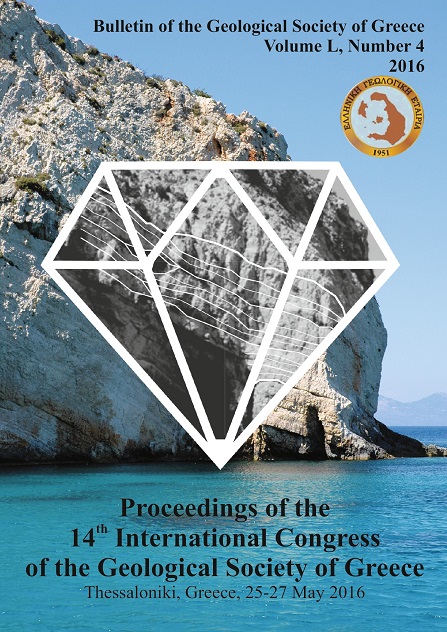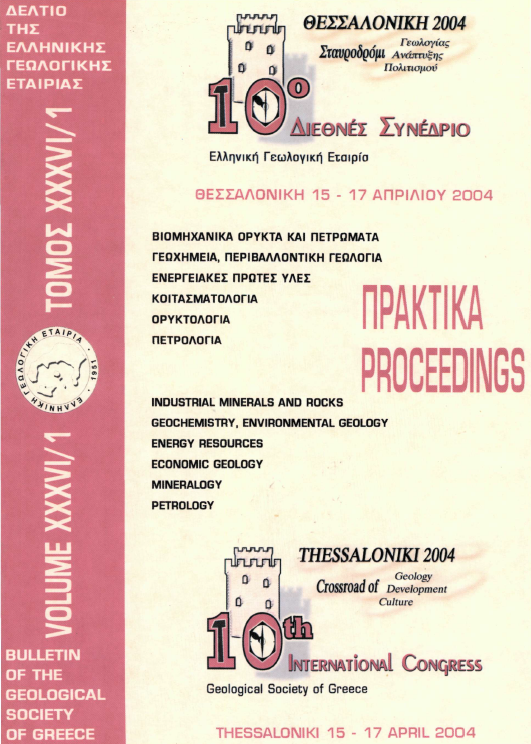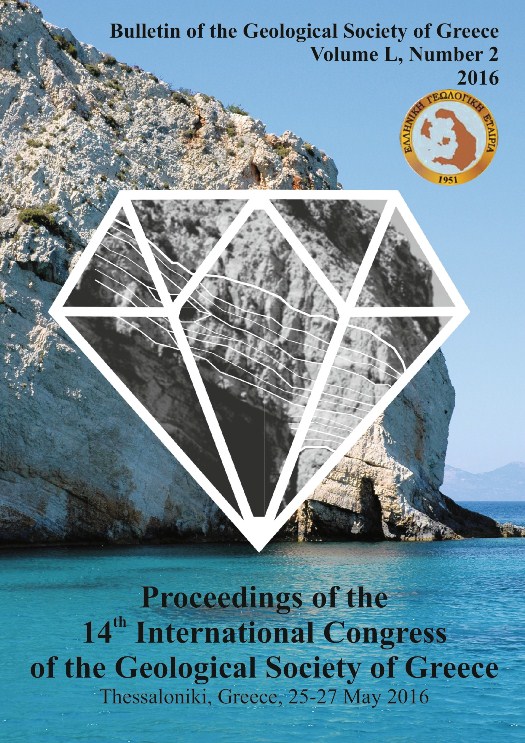ENVIRONMENTAL GEOCHEMISTRY OF PTOLEMAIS LIGNITES, INTERMEDIATE STERILES, AND COMBUSTION PRODUCTS

Abstract
The environmental geochemistry of lignite, intermediate sterile, fly ash and bottom ash samples from Ptolemais area, has been investigated. The chemical analyses of major elements, combined with SEM-EDS, showed that Si, Ca and Fe, are the most abundant elements and associated with various micro-particles. On average, the most abundant trace elements in the lignite samples are Ba (128 ppm), V (123 ppm), Cr (108 ppm), Sr (107), Ni (43 ppm), in intermediate sterile samples Ba (209 ppm), Sr (209 ppm), Cr (104 ppm), Ni (76 ppm), Zr (67 ppm), Zn (57 ppm), V (53 ppm), in fly ash samples Ba (455 ppm), Sr (336 ppm), Ni (180 ppm), Cr (160 ppm), V (110 ppm), Zr (102 ppm), Zn (74 ppm), Cu (71 ppm), Rb (62 ppm) and in bottom ash samples Ba (250 ppm), Cr (214 ppm), V (174 ppm), Sr (153 ppm), Ni (105 ppm), Zr (56 ppm), Zn (40 ppm)
Article Details
- How to Cite
-
Megalovasilis, P., Godelitsas, A., Papastergios, G., & Filippidis, A. (2016). ENVIRONMENTAL GEOCHEMISTRY OF PTOLEMAIS LIGNITES, INTERMEDIATE STERILES, AND COMBUSTION PRODUCTS. Bulletin of the Geological Society of Greece, 50(4), 2241–2250. https://doi.org/10.12681/bgsg.14280
- Section
- Special Session: Enviromental Geochemistry

This work is licensed under a Creative Commons Attribution-NonCommercial 4.0 International License.
Authors who publish with this journal agree to the following terms:
Authors retain copyright and grant the journal right of first publication with the work simultaneously licensed under a Creative Commons Attribution Non-Commercial License that allows others to share the work with an acknowledgement of the work's authorship and initial publication in this journal.
Authors are able to enter into separate, additional contractual arrangements for the non-exclusive distribution of the journal's published version of the work (e.g. post it to an institutional repository or publish it in a book), with an acknowledgement of its initial publication in this journal. Authors are permitted and encouraged to post their work online (preferably in institutional repositories or on their website) prior to and during the submission process, as it can lead to productive exchanges, as well as earlier and greater citation of published work.





